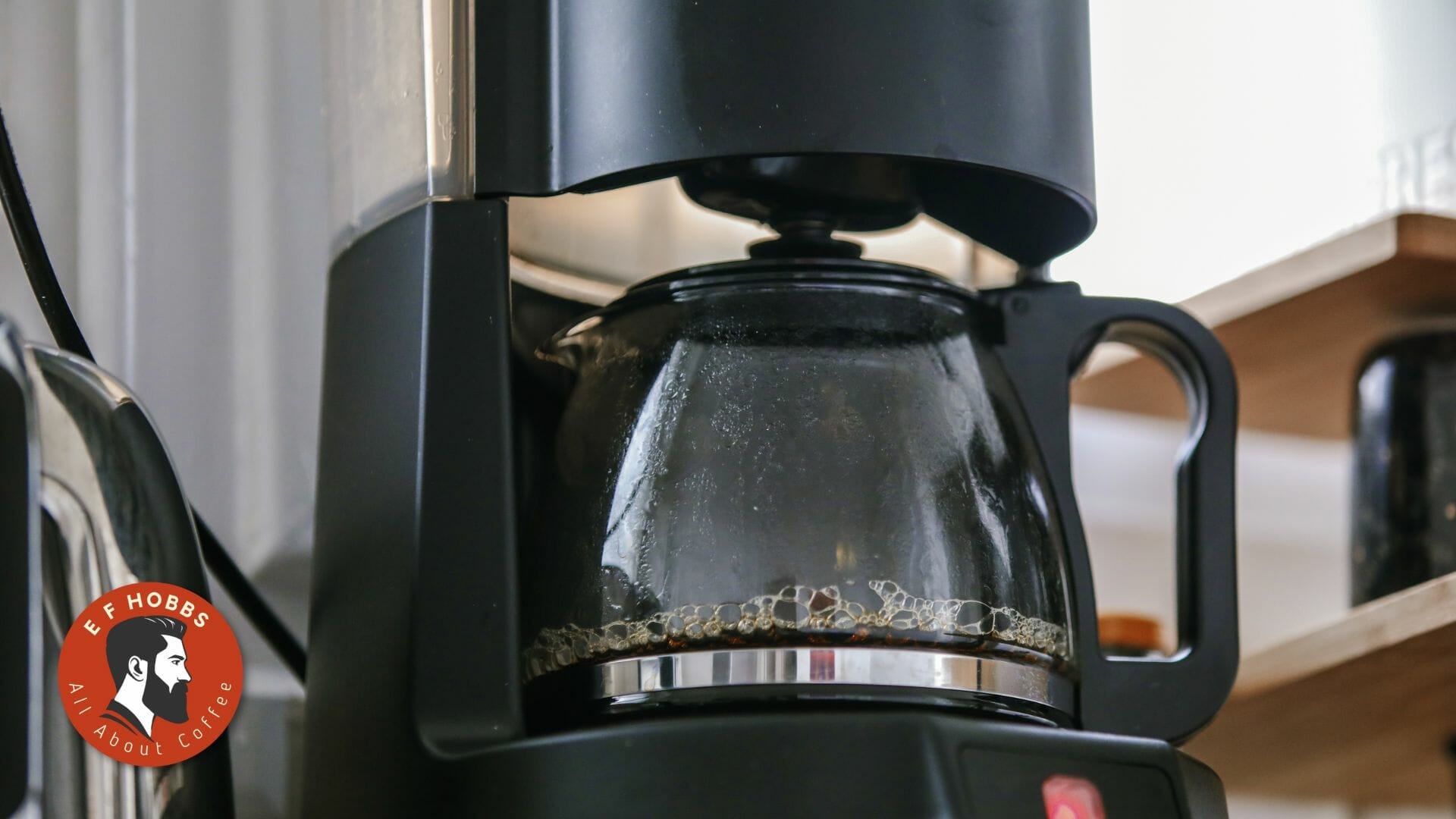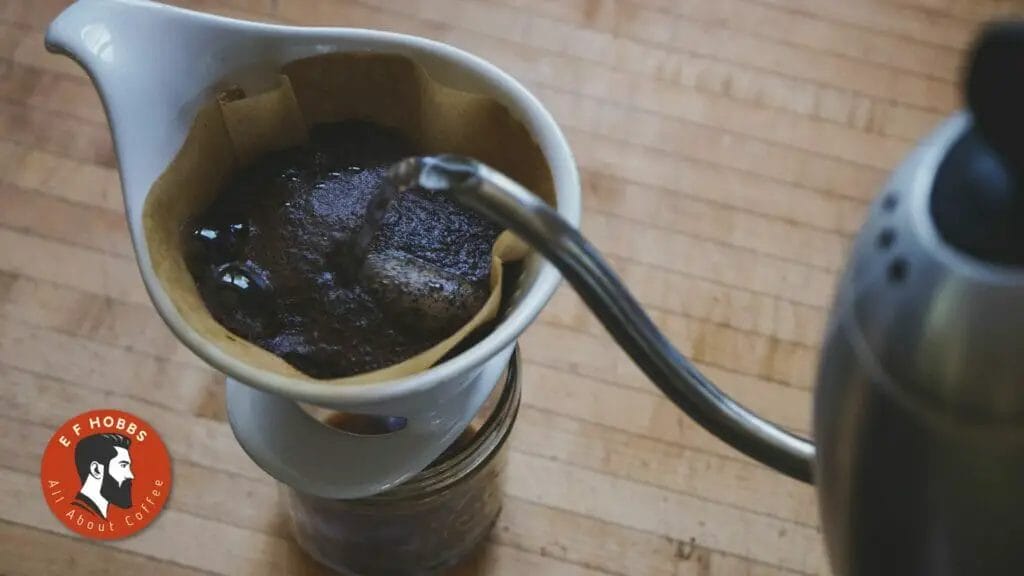How To Clean A Permanent Coffee Filter – A Complete Guide

A good cup of coffee is a perfect way to start your day, and for many people, a permanent coffee filter is an essential tool in the brewing process. However, just like any other kitchen utensil, they can become dirty and clogged over time.
Cleaning your permanent coffee filter may seem like a daunting task, but it’s essential to maintain its effectiveness and ensure that your coffee tastes as delicious as possible.
Think of cleaning your permanent coffee filter as giving it a spa day. Just like how we need to take care of ourselves once in a while to function at our best, so does our beloved kitchen tools.
In this article, I’ll share with you nine methods for cleaning different types of permanent coffee filters effectively.
You’ll also learn some tips for maintaining the cleanliness of your filter and ensuring that each cup of joe comes out tasting fresh and flavorful.
So let’s get started on improving our morning routine by taking care of our trusty companion – the permanent coffee filter!
9 Methods for Cleaning Permanent Coffee Filters
Coffee lovers know that a clean coffee maker is essential for brewing a delicious cup of coffee. One crucial part of the coffee maker that often gets overlooked is the reusable coffee filter.
Over time, coffee oils and fine coffee grounds can build up in the filter, affecting the taste of your coffee.
This blog post will guide you through nine effective methods to clean a coffee filter, ensuring you get the most out of your coffee experience.
Method 1: Soaking with Vinegar
Vinegar is a natural cleaning agent that can effectively clean coffee filters. Fill a bowl with equal parts of water and white vinegar.
Submerge your reusable filter in the solution and let it soak for 30 minutes. After soaking, rinse the filter under hot water to remove all the vinegar.
This method is particularly effective for cleaning coffee filter mesh and gold tone coffee filters.
Method 2: Scrubbing with Dish Soap
Using mild dish soap is another effective way to clean a coffee filter. Fill your sink with hot soapy water and place the filter in it.
Use a soft bristled dish brush to gently scrub the filter, paying special attention to the filter basket.
Rinse thoroughly to ensure all the soap residue is removed. This method is suitable for both metal coffee filters and espresso filters.
Method 3: Deep-Cleaning with Vinegar
For a deeper clean, especially for old coffee grounds and coffee oil that have built up over time, a vinegar deep clean is recommended.
Fill your full coffee maker with equal parts of water and vinegar and run a brewing cycle. After the cycle, rinse the filter and coffee basket thoroughly with hot water.
Method 4: Using Baking Soda

Baking soda mixed with water can be used to clean coffee filters. Make a paste with a bit of baking soda and water and apply it to the filter.
Let the filter soak for 15 minutes, then scrub it with a soft cloth. Rinse thoroughly to remove all the baking soda.
This method is particularly effective for cleaning metal pour over filters and coffee screens.
Method 5: Using Lemon Juice
Lemon juice is another natural cleaning agent that can be used to clean a coffee filter. Mix equal parts of lemon juice and water and soak the filter in this solution for 15 minutes.
Rinse thoroughly with hot water. This method can help to restore the fruity coffee flavor that coffee lovers crave.
Method 6: Using Denture Tablets
Denture tablets are an unconventional but effective way to clean coffee filters. Fill a bowl with warm water and drop in two denture tablets.
Once they’ve dissolved, place your filter in the bowl and let it soak for 30 minutes. Rinse thoroughly. This method is particularly effective for cleaning gold mesh filters.
Method 7: Using Hydrogen Peroxide
Hydrogen peroxide is a powerful cleaning agent that can be used to clean coffee filters.
Fill a bowl with equal parts of water and hydrogen peroxide and soak the filter in this solution for 30 minutes. Rinse thoroughly with hot water.
This method is suitable for cleaning both paper filters and permanent filters.
Method 8: Using Citric Acid
Citric acid is another effective cleaning agent for coffee filters. Mix one tablespoon of citric acid with two cups of water and soak the filter in this solution for 15 minutes.
Rinse thoroughly with hot water. This method is particularly effective for cleaning coffee socks and filter baskets.
Method 9: Using a Dishwasher
If your filter is dishwasher safe, this can be a convenient method for cleaning. Place the filter on the top rack of your dishwasher and run a normal cycle. Make sure to air dry completely after washing.
Remember, after each cleaning process, it’s important to let your filter air dry completely before using it again.
This will prevent any leftover moisture from affecting your coffee’s taste. Also, don’t forget to dispose of old coffee grounds in a trash can or garbage disposal to keep your filter and coffee maker in top shape.
Cleaning Different Types of Permanent Coffee Filters
When it comes to cleaning permanent coffee filters, it’s important to know that different types of filters require different cleaning methods.
As someone who loves their morning cup of joe, I’ve learned the ins and outs of cleaning metal, plastic, cloth, and even gold filters.
Each type requires a unique approach and attention to detail in order to ensure that your coffee tastes as fresh as possible every time.
Metal filters

The sturdy mesh webbing of this metal filter can be easily rinsed under running water, freeing it from all the tiny grounds that clog its delicate pores. I usually hold it under a stream of hot water and use my fingers to remove any stubborn particles.
For a more thorough cleaning, I soak it in a mixture of warm water and vinegar for about 15-20 minutes before scrubbing it gently with a soft-bristled brush.
Here are some tips to help you enjoy using your reusable metal coffee filter:
- Make sure to rinse the filter thoroughly after each use to prevent buildup.
- Avoid using harsh detergents or abrasive sponges that could damage the mesh.
- If you notice any discoloration or buildup on the filter, try soaking it in a solution of warm water and baking soda for an hour before washing it as normal.
With proper care, your gold tone coffee filter will provide many delicious cups of coffee for years to come!
Plastic filters
If you’re looking for a lightweight and flexible option for your morning cup of joe, plastic filters may be the perfect fit for you.
One thing to keep in mind with plastic filters is that they require a bit more care when it comes to cleaning.
To start, remove any leftover coffee grounds from the filter. Then, rinse it under hot water to get rid of any debris or residue.
Next, fill a bowl or sink with hot water and add a small amount of mild soap. Place the plastic filter into the soapy water and let it soak for 10-15 minutes.
After soaking, use a soft-bristled brush or sponge to gently scrub away any remaining stains or buildup on the filter. Rinse thoroughly under hot water before using again.
With these simple steps, you can keep your permanent plastic coffee filter clean and ready for your next cup of coffee!
Cloth filters
Looking for an eco-friendly and reusable option that’ll brew you the perfect cup of joe? Cloth filters may be just what you need.
These filters are made from natural fibers such as cotton or hemp and can be used over and over again.
Here’s how to clean them properly:
- Rinse the cloth filter with warm water to remove any remaining coffee grounds.
- Fill a bowl with warm water and add a small amount of soap.
- Place the filter in the soapy water and gently scrub it with your hands.
- Rinse the filter thoroughly with warm water to remove any soap residue.
- Hang the filter up to dry completely before using it again.
When cleaning cloth filters, it’s important to avoid using harsh chemicals or bleach, as these can damage the fabric.
Additionally, never put cloth filters in the dishwasher or washing machine, as this can cause them to shrink or lose their shape.
By following these simple steps, you can ensure that your reusable coffee filters remain clean and effective for many uses to come.
Gold filters
Get ready to brew the perfect cup with gold filters – they’re a game-changer for your morning routine!
Gold coffee filters are made of metal and designed to last longer than traditional paper filters. They also allow more oils and flavors from the coffee beans to pass through, resulting in a richer and fuller taste.
Cleaning a gold coffee filter is easy but important for maintaining its performance.
First, rinse it with warm water after each use to remove any remaining grounds.
Then, once a week, soak the filter in a solution of warm water and baking soda for 15-30 minutes before rinsing thoroughly.
Avoid using harsh chemicals or scrubbing too hard as this can damage the filter’s delicate mesh.
With proper care, your gold coffee filter can provide delicious cups of coffee for years to come!
Here Are Some Extra Tips for Cleaning Permanent Coffee Filters
1. Use mild, fragrance-free dish soap:
- When cleaning your permanent coffee filter, opt for a mild, fragrance-free dish soap.
- Harsh cleansers may leave behind residue or alter the taste of your coffee.
- A gentle dish soap will effectively remove oils and coffee grounds without compromising the filter’s quality.
2. Clean after every use and let it dry completely:
- Make it a habit to clean your permanent coffee filter after each use.
- Rinse it thoroughly to remove any remaining coffee grounds or oils.
- After rinsing, allow the filter to air dry completely before storing it.
- Moisture can lead to mold or unpleasant odors if not dried thoroughly.
3. Thoroughly rinse to avoid soapy flavors:
- After washing your coffee filter with dish soap, make sure to rinse it thoroughly to eliminate any soapy residue.
- Soap remnants can taint the flavor of your coffee and ruin the brewing experience.
- A thorough rinse with clean water ensures a pristine filter and pure coffee flavor.
4. Speed up the drying process with a gentle towel wipe:
- To expedite the drying process, gently pat the filter with a clean, soft towel after rinsing.
- This helps remove excess water and aids in quick drying.
- Avoid rubbing vigorously to prevent damage to the filter’s delicate mesh.
5. Avoid bleach, steel wool, and abrasive sponges:
- When it comes to cleaning a permanent coffee filter, steer clear of harsh substances like bleach, steel wool, or abrasive sponges.
- These can scratch or degrade the filter’s surface, leading to reduced filtration performance and potential contamination of your coffee.
6. Use a soft-bristled brush for hard-to-reach areas:
- To ensure a thorough clean, employ a soft-bristled brush for cleaning hard-to-reach areas of the filter.
- Gently scrub the mesh and crevices to dislodge any stubborn coffee residue.
- Be gentle to avoid damaging the filter.
7. Use warm, sudsy water and rinse well:
- For routine cleaning, warm sudsy water is highly effective.
- Soak the coffee filter in warm water mixed with mild dish soap, and gently agitate it to dislodge any trapped coffee particles.
- Rinse the filter thoroughly afterward to remove all traces of soap.
8. Soak in a vinegar-water mixture overnight:
- Periodically, it’s beneficial to deep clean your permanent coffee filter.
- Prepare a mixture of equal parts vinegar and water and soak the filter overnight.
- The acidity of vinegar helps dissolve mineral deposits and eliminate any lingering flavors.
- Rinse the filter thoroughly the next day before using it again.
9. Use baking soda on a scrub brush:
- Stubborn stains or odors can be eliminated using baking soda.
- Create a paste by mixing baking soda with water, then gently scrub the filter with a soft-bristled brush.
- Rinse it thoroughly afterward to remove any residue.
- This method effectively tackles stains and odors, leaving your filter fresh and clean.
10. Clean regularly to maintain coffee flavor and machine function:
- To ensure the best coffee flavor and maintain the optimal performance of your coffee machine, make cleaning your permanent coffee filter a regular practice.
- Regular cleaning prevents buildup, enhances filtration, and contributes to a consistently delicious cup of coffee.
Keep your morning cup of joe tasting its best by using these easy tips for maintaining your trusty permanent coffee filter.
FAQs
Conclusion
In conclusion, cleaning a permanent coffee filter isn’t as daunting as it may seem. With the right tools and techniques, you can have your coffee filter looking brand new in no time.
A clean coffee filter ensures not only a better tasting cup of coffee but also extends the lifespan of your machine.
As I finished cleaning my permanent coffee filter, I couldn’t help but think about how this task symbolizes the importance of taking care of our possessions.
Just like we need to take care of our bodies or homes, we need to give attention to the things that make our lives easier and more enjoyable, such as our trusty coffee filters.
So let’s take a moment to appreciate these unsung heroes and show them some love through regular cleaning and maintenance. Happy brewing!
